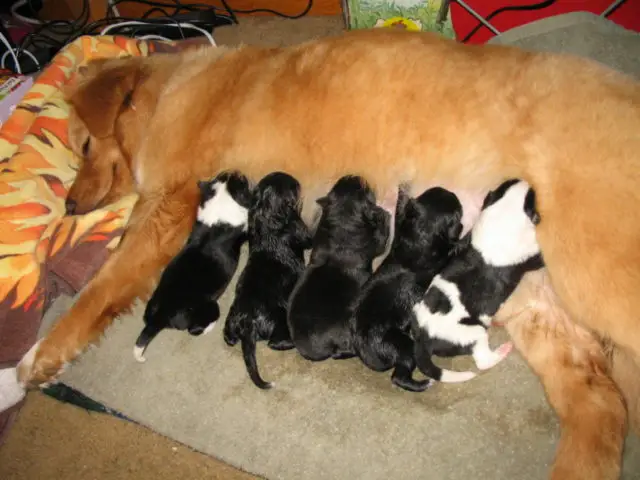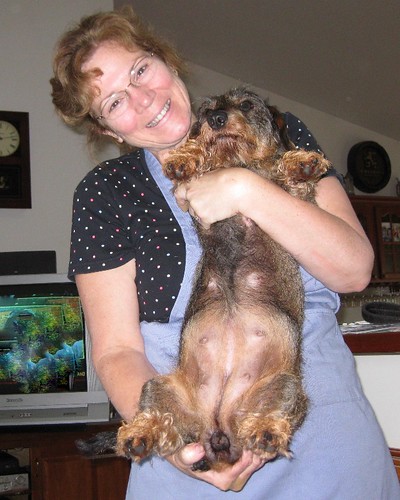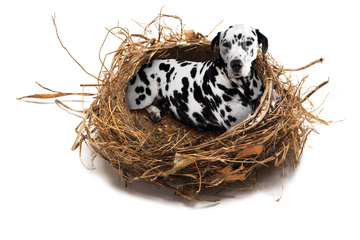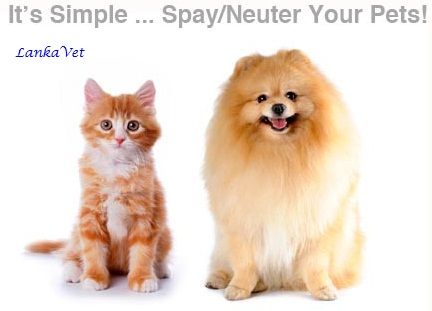
In an ideal world, the mama dog
would be able to provide everything all of her puppies need, but in the real
world, you may need to step in to assist if she can’t or won’t care for them
properly. If a litter is especially large or if there are problems during
whelping, she may be physically unable to take care of all of the puppies’
needs. In some cases, a mother might reject one or more of her pups,
particularly if they are sickly or under-sized.
Newborns have four major needs
for the first few weeks of their lives: warmth, food, hygiene, and physical
safety.
Keeping
Newborn Puppies Warm
Newborns, particularly if they
are very small, may have a hard time maintaining their body heat. Typically,
puppies cuddle with each other or with their mother to conserve and share body
heat. When one of the puppies becomes too warm, he or she will simply move away
from the group to cool off.
 To simulate this if you have to
take over care of the pups, you will want to provide a temperature gradient so
that one end of the puppies’ area is warm, the other cool. This can be done by
providing a heating lamp over one end of the box. Alternatively, hot water
bottles can be wrapped in blankets or towels and placed at one end of the pen.
To simulate this if you have to
take over care of the pups, you will want to provide a temperature gradient so
that one end of the puppies’ area is warm, the other cool. This can be done by
providing a heating lamp over one end of the box. Alternatively, hot water
bottles can be wrapped in blankets or towels and placed at one end of the pen.
Under no circumstances should a
heating pad be used for puppies. If the pup falls asleep on a heating pad, he
or she can be seriously burned, and the dog’s sharp teeth can easily puncture
the protective coating over the electrical wires in both the pad and the cord,
causing electrocution.
Feeding
Newborn Puppies
 Newborn puppies typically need
to be fed every 2-3 hours. Although mother’s milk is best because of the
immunity it passes from mother to pups, there are acceptable substitutes if mom
is not up to the task. Puppies receive most of their immunity within twelve
hours after birth, so make sure all of the puppies get to suckle at least once
from the mama soon after they are born.
Newborn puppies typically need
to be fed every 2-3 hours. Although mother’s milk is best because of the
immunity it passes from mother to pups, there are acceptable substitutes if mom
is not up to the task. Puppies receive most of their immunity within twelve
hours after birth, so make sure all of the puppies get to suckle at least once
from the mama soon after they are born.
Human baby formula does not
meet the nutritional needs of puppies and should not be used. The breeders at
Leerburg Kennel recommend whisking together the following ingredients:
10 oz. of goat's milk (may
substitute 10 oz. of canned evaporated milk thinned with three ounces of boiled
water)
1 raw egg yolk
1 Tablespoon mayonnaise
1 cup whole yogurt (not skim or
fat free)
½ teaspoon of karo syrup
If you are using canned
evaporated milk, boil the water then let it cool. Boiling water has a
temperature of 212 °F, which is way too hot for the puppies. Once the water has
cooled, you will make the formula, and then heat it on the stove to about 100
degrees.
Care should be taken not to
over-blend the ingredients to the point where bubbles form, as they can cause
very painful gas bubbles. This formula can be kept in the refrigerator for up
to seven days.
 Puppies should be fed only a
liquid diet for the first 4 - 5 weeks, and then gradually weaned to solid food.
To begin the weaning process, feed the formula in a dish for a few days to get
the puppy weaned from the bottle. Once they have the lapping thing mastered,
mix a small amount of puppy kibble or raw ground beef with the formula. As the
pups are able to tolerate it, increase the amount of solids and decrease the
amount of formula. By 8 weeks, the pups should be totally on solid food.
Puppies should be fed only a
liquid diet for the first 4 - 5 weeks, and then gradually weaned to solid food.
To begin the weaning process, feed the formula in a dish for a few days to get
the puppy weaned from the bottle. Once they have the lapping thing mastered,
mix a small amount of puppy kibble or raw ground beef with the formula. As the
pups are able to tolerate it, increase the amount of solids and decrease the
amount of formula. By 8 weeks, the pups should be totally on solid food.
Hygiene
for Newborn Puppies
 If you have ever observed a mama
dog with her puppies, you have no doubt noticed that she spends a lot of time
licking them. This is not solely to remove that funky puppy smell. Licking a
puppy’s belly and anus actually stimulates the dog’s intestines, preventing
constipation.
If you have ever observed a mama
dog with her puppies, you have no doubt noticed that she spends a lot of time
licking them. This is not solely to remove that funky puppy smell. Licking a
puppy’s belly and anus actually stimulates the dog’s intestines, preventing
constipation.
If you are taking over for the
mama, use a washcloth soaked in warm water to gently rub each puppy’s belly and
anus a couple of times each day. If it’s warm outside, feel free to do this
outdoors so the dog begins to associate being outdoors with going potty.
You can give each puppy a warm
sponge bath as needed to remove urine and any leftovers stuck in his or her fur
and wrinkles. At this young age, however, soap and shampoo should not be used.















